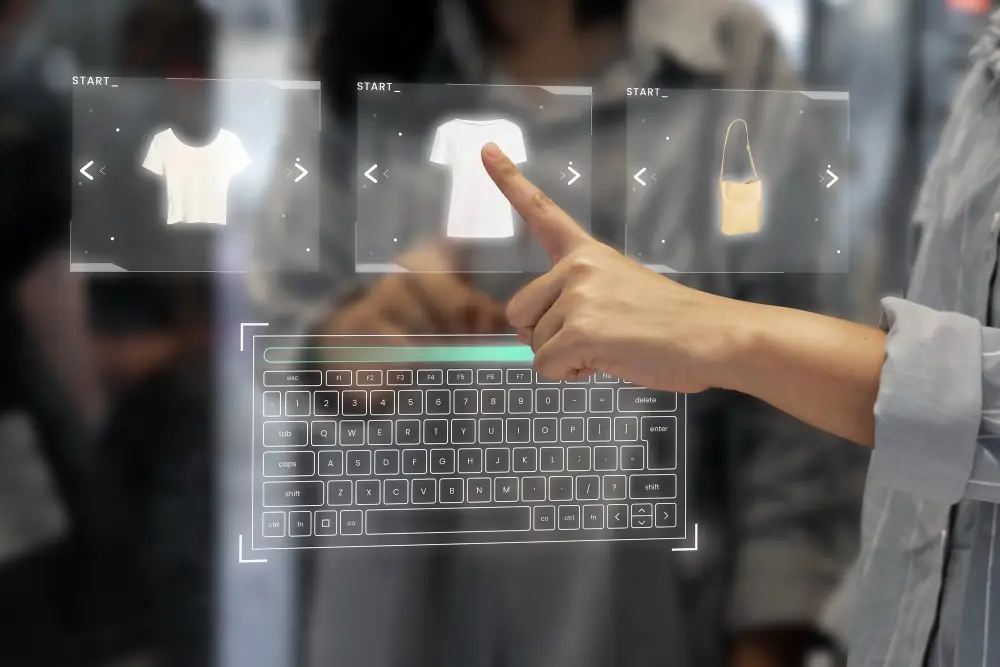After 2 years shaken up by covid and confinement, the retail distribution sector has been able to adapt. Sales and marketing strategies have evolved and trends have increased or emerged. In general, digital uses are increasingly shaping the shopping experience at points of sale, and while erasing the boundaries with e-commerce, physical store chains must distinguish themselves from it. Here are 5 trends that will increase in 2023 and that retail brand marketing strategies will have to integrate.
1. Omnichannel buying journeys
Omnichannel shopping journeys refer to a company’s ability to deliver a consistent and seamless experience to customers regardless of the communication channels and touchpoints they use.
This means that customers can interact with the business in different ways, such as using a website, mobile app, brick-and-mortar store, or social media, and the business must be able to provide a consistent experience. and personalized at each stage of the purchase journey.
This concept is not new in retail, but it is clear that it is increasingly important in the customer experience. In the 3rd quarter of 2022, Fevad measured e-commerce growth of +16.8% compared to the 3rd quarter of 2021. Online purchases are part of everyday French life. On the one hand, online and in-store purchase data must be centralized in order to offer a seamless experience to consumers. On the other hand, because of these increasingly important web uses, customers have become accustomed to saving time by researching and obtaining information online, before possibly buying in store. Online research makes it easier to find the desired product and consult reviews, while in-store purchase will make it possible to ensure its availability, to try it, and to avoid the cost and time of transport. . Thus, omnichannel in retail also consists in displaying the same information on all points of contact: e-commerce, social media, market places, and shops. This is why “presence management” has become so strategic, as we explained here.
Du fait de l’effacement des frontières entre transactions en ligne et hors ligne, les enseignes doivent aussi adapter leur organisation en point de vente : pour proposer du click and collect (acheter les produits en ligne et les récupérer en magasin) et du “shop from store” (livrer aux clients depuis les magasins et non plus depuis une plateforme d’entrepôt).
2. Personalization
Personalization of the shopping experience is about tailoring interactions with customers to meet their individual needs and preferences. This can be done in a number of ways, including using technologies to collect customer data and using that data to personalize offers and communications.
Here are some examples of ways to personalize the retail shopping experience:
- Product recommendations based on customer purchase history and interests: Stores can use customer purchase and interest history data to recommend products that might be relevant to them.
- Targeted offers: Stores can use customer purchase and interest history data to send targeted offers via email or text.
- Personalized loyalty programs: Stores can offer personalized benefits and rewards to members of their loyalty program based on their purchases and interests.
In any case, this assumes centralization of purchase data and information collected on the customer, from the various points of contact: site, points of sale, customer relations department, interactions via social networks, etc.
Start-ups now offer solutions for personalizing product recommendations using artificial intelligence: this is the case of Nuukik and Target2sell.
3. Social commerce
Social commerce involves leveraging social media platforms to facilitate the sale of products and services. It combines traditional e-commerce with the social aspect of these platforms, such as Facebook, Instagram or Tik Tok, by allowing users to discover, interact with and buy products directly on these applications.
According to a survey conducted by Square, 36% of French consumers made a purchase directly on social networks last month, and according to a study conducted by Forbes, 75% of retailers sell on social networks.
Social commerce can take different forms, such as:
- Direct Sales: Social media platforms like Instagram and Facebook have introduced features that allow businesses to sell products directly through their profiles or ads. Users can browse products, view details, and make a purchase without leaving the app.
- Influencer marketing: Many social media influencers promote products on their channels and use referral links or discount codes to track sales. It can be an effective way for businesses to reach a large, engaged audience and drive sales.
- Finally, there is more and more talk of “live shopping“, which is also a form of social commerce in itself, but instantaneous.
Live shopping or “live buying” is a form of social commerce that involves the use of live video streaming to present and sell products to an audience in real time. Live shopping events can be hosted on various platforms, including social media apps, e-commerce websites, and dedicated live shopping apps.
At a live shopping event, the host will typically demonstrate and describe the products being sold, answer questions from the audience, and offer promotions or discounts. Viewers can interact with the host and other viewers in the comments section, ask questions, and make purchases directly through the live stream.
67% of French consumers say they are interested in live shopping (Forrester Consulting study commissioned by AliExpress).
4. Retailtenment
Retailtenment is the contraction of the words “retail” and “entertainment”: this refers to the entertainment role that physical stores must now play, as opposed to e-commerce sites more directly oriented towards sales. For a brand, physical points of sale must meet different consumer expectations, and enhance their physical space: they are shopping destinations, people come there to have fun and have a good time in the world of brands that we appreciate, and incidentally… to buy.
This concept aims to highlight a paradox: although the share of in-store sales is down compared to e-commerce, stores have a role to play in strengthening the brand and the customer relationship: by offering immersive experiences and Instagrammable, which will contribute to the influence of the brand, to its influence and ultimately to sales via omnichannel journeys.
Thus, for example, the Lacoste Arena, the new store of the sportswear brand which opened its doors on the Champs Elysées in May 2022, gives pride of place to experiences: it offers a meeting space, a customization service, but also a ‘Croco wall’, which is an immersive artistic work with a photobooth.
5. Eco-responsibility and circular economy
According to KPMG, the second-hand market represents 7 billion euros in turnover in 2022. Cyber buyers increasingly have the reflex to check whether the desired product does not exist second-hand.
Faced with this massive trend, retailers are expanding their offer of eco-designed products and offering services to make consumption more sustainable. These eco-responsibility strategies therefore take different forms:
- A greater share of eco-designed products in catalogs
- Services to repair products, like Fnac Darty
- Offers to buy back and sell second-hand products, such as what Decathlon offers, or even the rental of products when the use lends itself to it (also at Decathlon)
- Loyalty programs integrating brand responsibility commitments, and involving consumers in their CSR initiatives (discover our white paper on this subject here)


